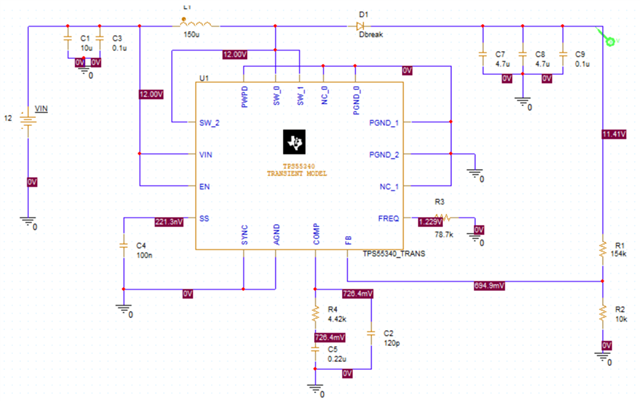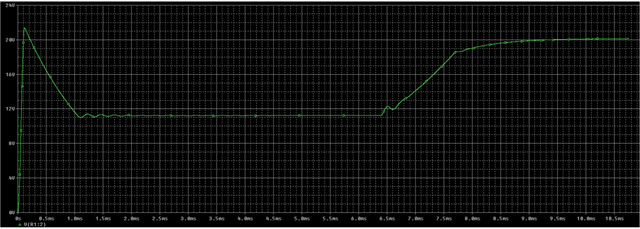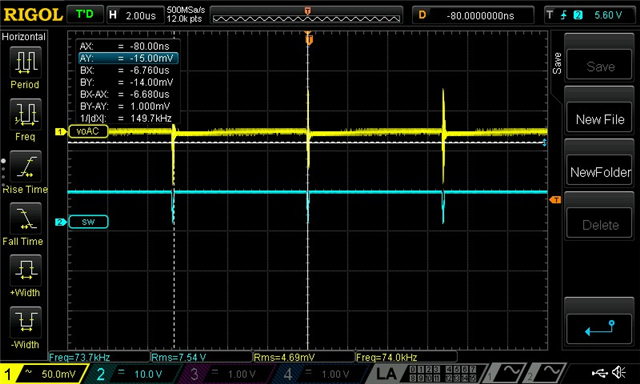Other Parts Discussed in Thread: TPS55340
Hi,
I have designed a boost converter to generate 20V from a 12V bus. The nominal load will be between 150 to 75-ohm. I have used the reference design tool "TPS55340_BOOST_CALCTOOL_REVC_EDIT_v2".
| Vin | 12 V |
| Vout | 20 V |
| Iout_max | 260 mA |
| f_sw | 600 kHz |

I have run simulations with Pspice with the TPS55340 under nominal load and the result is this: 

The selected components are:
| CO1,CO2,CO3,CO4 | 4.7-uF | C2012X7R475K125C |
| CCOMP | 0.22-uF | GRM155R61H224KE01D |
| CHF | 120-pF | C0402C121K5RACTU |
| RCOMP | 4.42-kOhm | ERA-2ARB4421X |
| RSH | 154-kOhm | RP73PF1E154KBTD |
| L1 | 150-uH | SRR1050HA-151Y |
| D1 | B540C-13-F | |
| RSL | 10-kOhm | RP0402BRD0710KL |
| U1 | TPS55340MRTETEP | |
| CIN1 | 10-uF | GRM188R6YA106MA73D |
| CIN2,CO5 | 0.1-uF | GRM155R71H104KE14D |
| RFREQ | 78.7-kOhm | CRCW040278K7FKED |
| R5 | 50-OHm | RP73PF1E154KBTD |
When a load is placed at the output, I am testing the "SW" pin and I can see the frequency drops from 600 kHz to 150 kHz and the IC enters in frequency foldback. This is due to overcurrents but I don't see where this overcurrent can be coming from. I have checked the inductor saturation current and its well above the recommended from the design tool. What I can see is that the voltage drops for higher load currents. For a 10-kohm load resistor the converter works just fine but when I place lower and lower values the voltage keeps dropping until I see the 12V input.

I hope there is enough information for you to understand my problem.
Thank you,
Jordan

